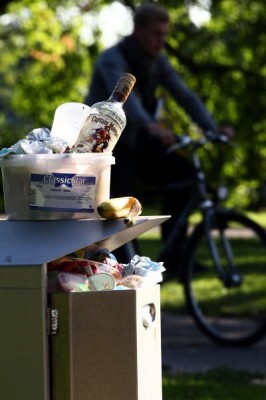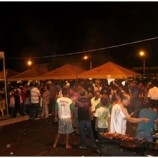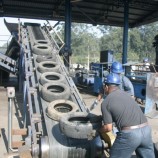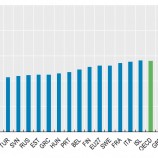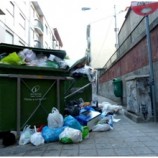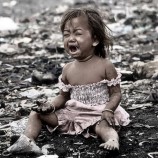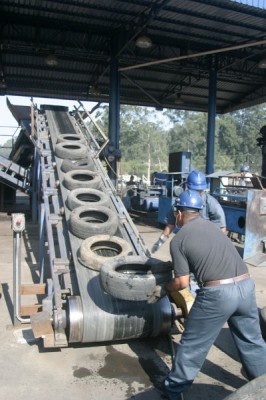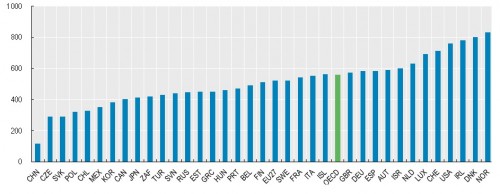Evolutional factors of per capita solid waste generation in Brazil
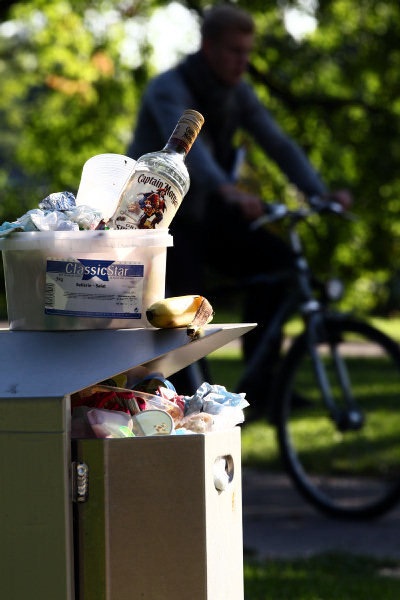
Will there ever be a development model that reconciles the increase in household consumption and simultaneously with the reduction of per capita generation of solid waste? The recent National Policy on Solid Waste – Law 12.305/2010 – prioritizes non generation, followed by reduction, reuse, recycling, solid waste treatment and the disposal of environmentally sound waste. Reverse logistics and shared responsibility, as established by law, are strategic in the implementation of a model for sustainable production and consumption. The responsibilities of the generator, importer, distributor, dealer, as well as the product consumer in attaining a reverse flow of waste can positively impact this goal. However, this pathway has not yet been built, even in the countries of the European community with their strict policies, the results are not promising.
For many, the key to resolving the problem may lie in the implementation of the 3 R’s policy (Recycle, Reuse, Reduce). To reduce the generation of solid waste, however, we must establish clean production, reverse logistics, shared responsibility and sustainable consumption. This model can be considered contradictory in Brazil. In order to reduce the extraordinary social inequalities, resources are needed via tax generated proceeds from the production of consumer goods, among others. For an affluent population, consumerist greed must be reduced, which is generally seen as synonymous with happiness. In order to reuse, it is necessary to rethink product designs, being that the designs of which are often disposable, and are sometimes fabricated based on planned obsolescence. The last R – Recycle – is what has earned better results in Brazil, especially for being a business. It can mean company profit and income for the collector of recyclable materials. This is where selective collection, sorting, pressing, baling and marketing of solid dry waste comes into play. However, with so many autonomous garbage pickers and informal scrap dealers unaccounted for by PNSB, the National Survey of Sanitation, according to the study CEMPRE/Ciclosoft Business Commitment for Recycling and the NHIS, National Information System on Sanitation, it is difficult to assess its impact. Hoping to identify the factors that can influence directly or indirectly the generation of solid waste per capita in Brazil, they have set out to investigate a few hypotheses.
Factors that increase per capita generation of solid waste in Brazil
Some factors that may be contributing to the increase in per capita generation of solid waste:
– Increased employment and higher salaries;
– Policies to fight poverty – GMP, GCP and Bolsa Familia Program, Continued Benefit Provision;
– Reducing the number of people per household and per family;
– Larger participation of women in the labor market;
– Recent influx of migration of Northeasterners returning from the south to the northeast, stimulating new consumption habits;
– Greater facility in obtaining credit for consumption;
– No service charges of citizens for garbage collection and solid waste management;
– Frenetic stimulus for consumption via media channels;
– Indiscriminate use of disposable products.
Factors that reduce the per capita generation of solid waste in Brazil
Some factors may contribute to the reduction of the effective mass of solid waste generated, provided that they are implemented in a coordinated and thorough manner. It is necessary, however, to separate effective reduction from apparent reduction of consumption. If a food item is marketed as semi processed, its consumption may result in the generation of a solid waste with less specific weight and the reduction of solid waste mass generated. Therefore, this represents an apparent reduction in consumption owing to the lesser weight of the waste. However, this may represent a more complex generation of solid waste due to the packaging material (polystyrene and tetra pack).
Factors that can supposedly reduce the specific weight of solid waste are:
– increased industrialization process of foods;
– increased consumption of semi-processed products.
Factors that can supposedly reduce the generated amount of solid waste:
– The application of reverse logistics principles and shared responsibility, established by Law 12305 of August 2, 2010 by the National Policy on Solid Waste (prevention in the process of the production of goods, product design, new consumer behavior);
– Implementation of economic instruments for industry, the city and the citizen;
– Incentives for the deployment of home or vicinal compost;
– Increasing the number of household refrigerators for the reduction of organic waste;
– The expansion of collection services for families with lower incomes;
– The application of environmental education principles and programs in schools;
– Campaigns to mobilize society for conscious consumption;
– Collection service charges in proportion to the waste generated;
– Use of returnable packaging products;
– The application of the principles of A3P, the Public Administration’s Environmental Agenda.
FINAL CONSIDERATIONS
As demonstrated in this text, the per capita generation and characterization of solid wastes has to do with a country’s economic development, purchasing power and the corresponding consumption of any given population. Wealthier families, larger cities and wealthier countries present indicators of per capita generation of solid waste superior to poorest families, smaller cities and developing countries. A growing concern has developed among several countries about the reduction of per capita waste generation or its stabilization, with established objectives and the implementation of economic instruments. However, the extent of reducing per capita generation of solid waste depends on a number of factors which may pave the way for more significant changes in current patterns of production and consumption in order to achieve the desired effects. Until 2000, when the average per capita generation of solid waste was 514 kg/capita/year in the countries studied by the OECD, Organization for Economic Cooperation and Development, among them the richest countries in the world, solid waste generation increased in accordance with the increase of the GDP.
From there on we can observe a faster GDP growth and a slowdown in the growth of solid waste generation and an even greater reduction in population growth. There is, however, despite all efforts, an estimated growth of per capita generation of solid waste in the countries studied at 611kg/person/year for 2015, 635 for 2020, 664 for 2025 and 694 for 2030. The question is raised about the limit for the growth of per capita generation of solid wastes, since no study points to a stabilization of values per capita generation in developed countries.
In Brazil’s case, the big news may be considered the enactment of the National Policy on Solid Wastes of Good Quality Law. With priority given to reducing generation, one must reflect on where to reduce, what to reduce and how to sustain the process. With the implementation of this law, there may be a breakthrough towards a sustainable management of solid waste in the country and its consequent stabilization or even reduction, changing the direction of the growth vector. To achieve the effective reduction and stabilization or generation per capita, it is necessary to discuss the implementation of legal and managerial instruments, with special attention paid to regulation and supervision of collection services.
When describing contributing factors in the variation of per capita generation of solid waste in Brazil, those more liable to cause increases are, in a first assessment, far more encompassing than those which may contribute to reduction. The steps to be taken in order to study the feasibility of reduction will depend on a lot more effort, being that they are still implemented in an ad hoc and fragmented way.
No studies exist that show an accurate assessment of trends in the evolution of per capita generation of solid waste in Brazil, if and when it will stabilize this indicator, whether conscious and sustainable consumption is close to being achieved and its respective generation of solid waste in environmentally acceptable standards. It is apparent how the current development model presupposes income growth of the poorest populations and the consequent consumption, a major effort to reduce poverty, misery and social inequality. As for policies which encourage sustainable consumption, they are still crawling on all fours. It is clear, therefore, that the economic, social and cultural factors that may cause increases in solid waste generation are more significant than those that may contribute to its reduction.
Related Articles


